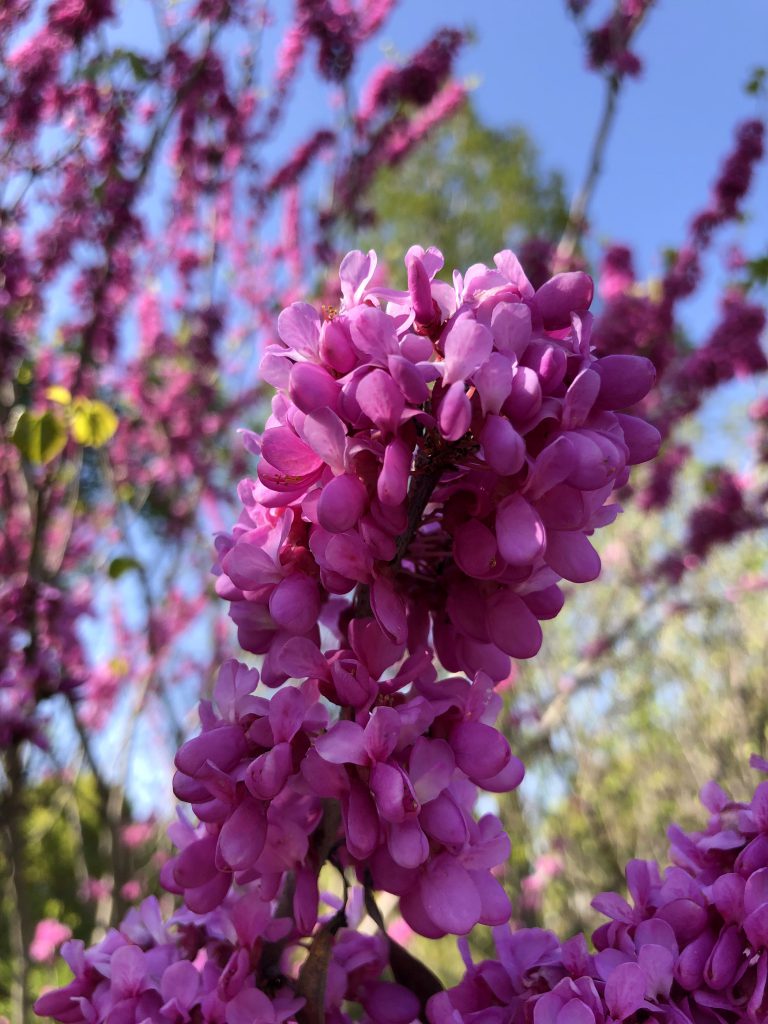
This year, the circulation of the seasons is about a month earlier than usual. The cherry blossoms have completely turned into leaf cherry blossoms, and the fresh green of the trees around them has become dazzling. Nemophila planted in the park’s flowerbeds are swaying coolly. The park is full of people sitting on benches, sunbathing, reading books in the shade, jogging in colorful sportswear, and enjoying spring. What caught my eye is Hana Suho. The brown branches are filled with purplish pink flowers. In Japan and China, Hana Suho is loved as an auspicious tree that expresses the joy of the arrival of spring. But in the West, from the legend that, one of Jesus’ disciples, Judas killed himself under the tree of Hana Suho, regretting his sins that Jesus was executed by his act of betrayal, Hana Suho has an ominous image. It seems that Hana Suho was made an unexpected false image. Judas must have wanted to atone under the beautiful Hana Suho.
季節の巡り様が例年に比べて1ヶ月近く早い今年です。桜もすっかり葉桜になり、辺りの木々の新緑が眩しくなってきました。公園の花壇いっぱいに植えられたネモフィラが涼しげに揺れています。ベンチに腰掛けて日光浴をする人、木陰で本を読む人、色とりどりのスポーツウェアを身に纏ってジョギングする人、公園内は春を楽しむ人で満ちています。ふと目にとまったのは花蘇芳。茶色の枝いっぱいに紫がかったピンクの花をたわわに咲かせています。日本や中国では、花蘇芳は春の訪れの喜びを表す縁起の良い樹木とされ愛されていますが、西洋では、イエスの弟子のひとりユダがお金に目がくらんでイエスを裏切り、イエスが処刑されることを知って己の罪を後悔し、花蘇芳の木の下で自殺したという言い伝えから、花蘇芳には不吉なイメージもあるとか。花蘇芳にとって濡れ衣もいいとこ。ユダも美しい花蘇芳の下で贖罪したかったに違いありません。
